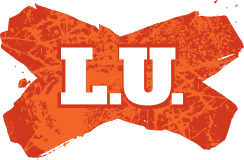Ride the Lion to Zion
Juniors
- Messages
- 1,188
It isn`t a knock-on unless there`s clear separation before the ball touches the ground.I get that type grounding is ok when on a loose ball, but if its already in the hand then it's a knock on IMO.
This is linked to a common error in tackle and ruck terminology. The media, and even some top refs, often refer to a "knock-on at the PTB". There is no such thing.
After the tackle is complete, the tackled player is required to maintain control of the ball before bringing it back into play. If he fails to do so it`s a "lost ball" not a knock-on.
A knock-on is defined as "to knock the ball towards the opponent`s dead ball line with hand or arm". When the tackled player drops the ball whilst attempting to play it, the direction is irrelevant. If it travels backwards, he can`t just pick it up and try again.
In general play, if the ball rolls from hand to wrist and makes contact with the ground there`s every chance it will be deemed a loss of control since the ball touching the ground represents the completion of the tackle. This is without clear separation.but yeah rolling out of ya hand onto your wrist
The question relevant to these rule amendments is therefore whether the knock-on law (before the tackle is complete) or the loss of control law (after the tackle is complete) should apply in relation to grounding.

